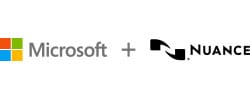As healthcare providers navigate workforce challenges and financial constraints, they face significant organizational change. Technology offers a powerful solution but also introduces complexity. Leveraging technology strategically and adapting to evolving models of care are now essential.
Traditionally, patient care has relied on manual processes, with clinicians physically visiting patient rooms. However, clinicians now spend a significant portion of each shift on documentation, leaving little time for high-value interactions. The American Medical Informatics Association’s 25x5 initiative aims to reduce documentation by 75%, reflecting its significant impact on clinician burnout, medical errors and patient outcomes.
The challenges associated with severe burnout — higher costs, safety concerns and decreased job satisfaction — are among the most pressing issues facing healthcare organizations. The problem is exacerbated when providers lack the tools to optimize workflows and simplify care coordination. Meanwhile, providers struggle to retain experienced nurses who are crucial to high-quality care.
Another challenge is that care is increasingly delivered outside traditional hospital settings: online, in patient homes and even in makeshift areas such as parking lots during the COVID-19 pandemic. Providers must be flexible to accommodate the rapid evolution of technology, organizational needs and patient expectations.
CDW’s Patient Room ‘Next’ is a proprietary strategy designed to tackle these interwoven issues. PRN promotes simpler, more curated technology environments that empower organizations to automate documentation, improve workflows, capture and analyze data via touchless technologies and adapt clinical spaces for diverse patient needs.
PRN employs sensors, automation and other technologies to minimize manual processes, allowing healthcare professionals to focus on meaningful, personalized and proactive interactions. Information flows more effectively, ensuring clinicians have timely access to essential data. Virtual nurses manage alerts and support on-the-ground nursing teams, enhancing patient safety through more efficient monitoring.
By fundamentally shifting care delivery and coordination, PRN advances the goals of the Quintuple Aim and positions organizations to solve today’s problems and meet future opportunities.






